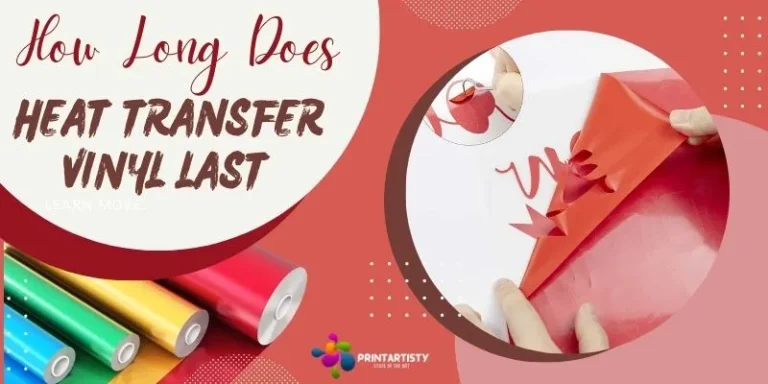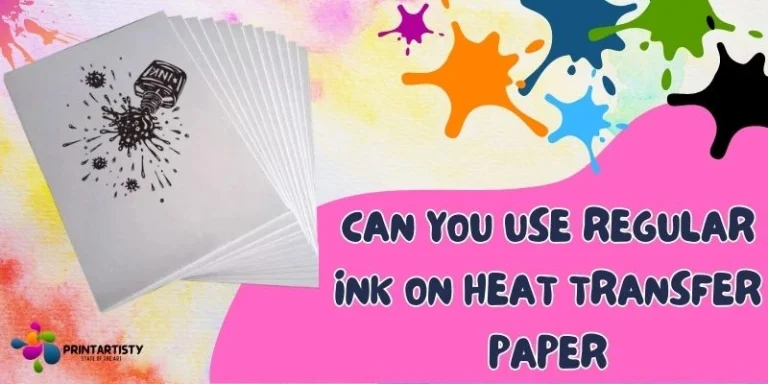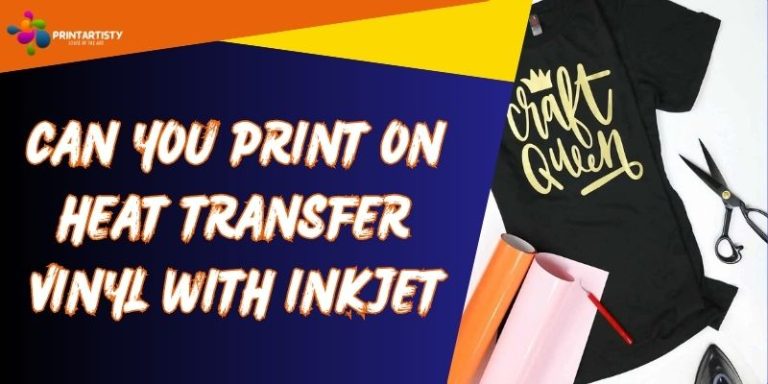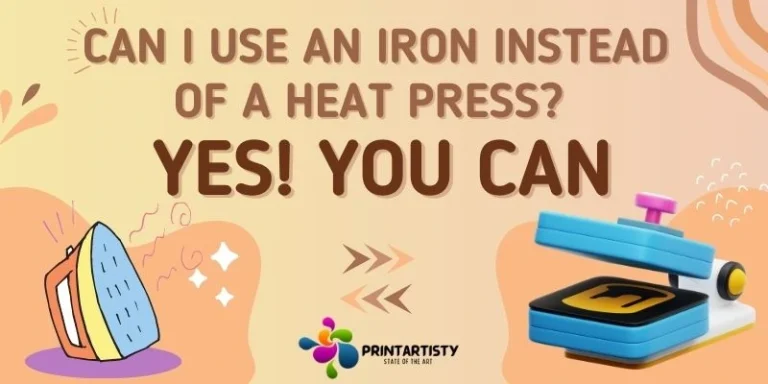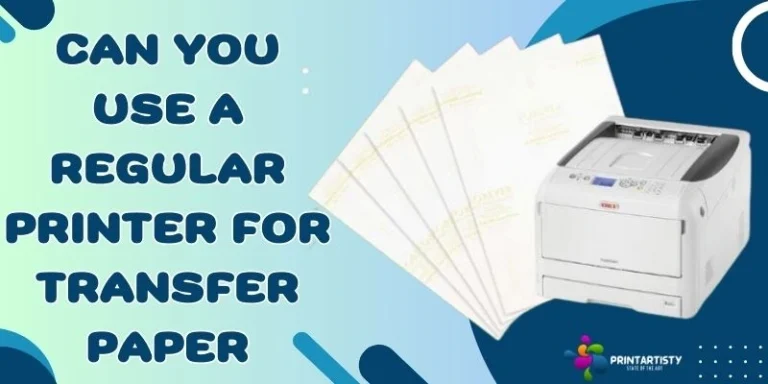Types Of Heat Transfer Paper & Printing | Inkjet, Laser Transfers
Heat transfer paper only has two main types: inkjet and laser transfer paper. They both are specialized and designed to handle the printing processes with their particular printer type. An inkjet printer typically uses inkjet paper which is designed to use with inkjet printers only. Whereas, laser paper is specialized to handle heat and toner particles.
Apart from these two types, sublimation also falls under the category of heat transfer printing. So we’ll also analyze all the types of heat transfer paper today and let you know how you can utilize them effectively.
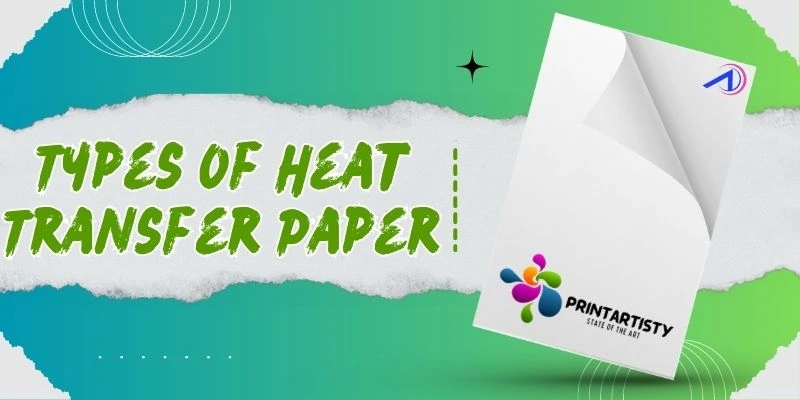
5 Types of Heat Transfer Paper
There are several types of heat transfer paper available in the market, each catering to different printing methods and fabric types. While you should understand the characteristic of each paper type to achieve the optimal results.
Here is the comparison table with the key differences between inkjet heat transfer paper and laser heat transfer paper:
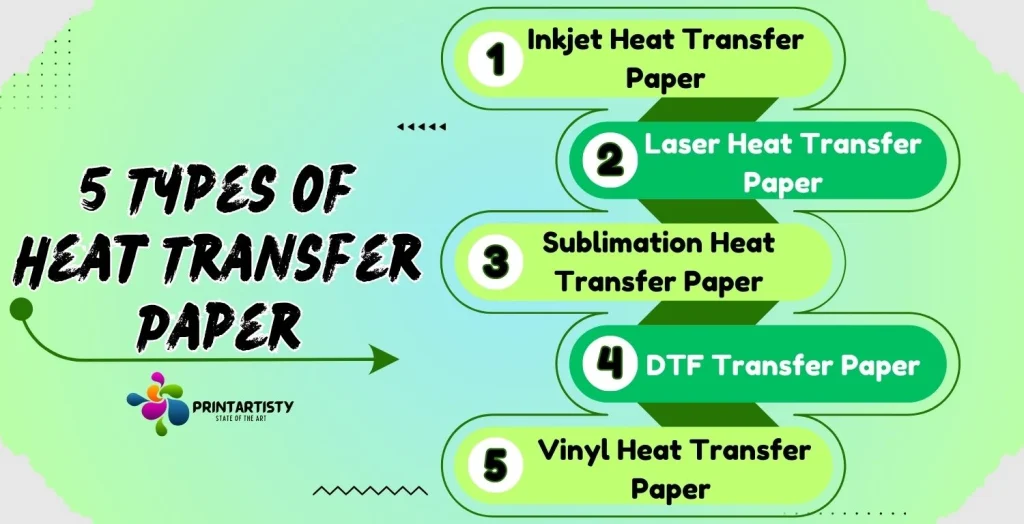
| Feature | Inkjet Heat Transfer Paper | Laser Heat Transfer Paper |
| Printer type | Inkjet printer | Laser printer |
| Ink type | Pigment based ink | Toner |
| Fabric type | Light-colored fabrics | Light-colored and dark-colored fabrics |
| Cost | Less expensive | More expensive |
1. Inkjet Heat Transfer Paper
Inkjet paper is specialized and bound to use with only inkjet printers. It typically features a clear film, it is then transferred onto a heat-sub sheet, and later on, the design is transferred onto the t-shirt. Another type of inkjet paper comes in a white base which is coated with either wax or aqueous colloid resin coated with a preferable amount of viscosity that binds the ink, preventing smudging and ensuring vibrant colors.
Check Can You Use A Regular Printer For Transfer Paper.
Inkjet transfer paper also looks transparent and this translucent coating onto the heat-sub transfer paper also ensures the proper transfer of ink particles onto the surface of the substrate or fabric.
Recommended applications and fabric types
Inkjet heat transfer paper works well with light-colored fabrics either cotton or polyester or any mixed fabric type, and provides excellent image resolution and details. Although exceptions are always there as you cannot heat transfer directly onto viscose or pure rayon due to heat-sensitive elements.
However, you cannot use transparent inkjet heat transfer paper for dark color garments. For using inkjet heat transfer paper on dark garments, you need to utilize another type of heat transfer paper that has a white backing that will allow the image to show up on the dark garment.
2. Laser Heat Transfer Paper
Laser heat transfer paper is specifically formulated for laser printers because laser printers use heat to melt the toner. Laser heat transfer paper is heat resistant that fuses the toner particles onto the fabric when heat pressed. Laser heat transfer paper also has a coating but heat-activated that bonds the image to the fabric. Though laser heat transfer paper is white colored not translucent.
Recommended applications and fabric types
While laser transfer paper can be used for dark and light fabric colors either cotton or polyester but more recommended for dark color fabric.
3. Sublimation Heat Transfer Paper
Sublimation transfer paper is far distinct from heat transfer paper. It also has a polyester coat that binds the sublimation ink. The sublimation paper enables the transfer of designs onto polyester or polyester-coated substrates. Unlike heat transfer paper printing, sublimation ink is infused into the t-shirt pores when heat pressed.
Sublimation heat transfer paper is more durable I will say permanent, peel, and fade resistant. But the biggest restriction in the sublimation transfer paper printing is you cannot sublimate dark or black colors directly without additional steps. And even it won’t be possible to sublimate on cotton. Because cotton fabric pores are not being opened during heat press.
There are various ways that allow you indirectly to sublimate dark or black color and cotton. With the following steps, you can sublimate both of them too.
4. DTF Transfer Paper
DTF process is booming in the printing market but it is more complicated than sublimation and heat transfer paper. The DTF transfer process uses a PET (polyethylene terephthalate film also referred as DTF film.
A design is firstly printed on DTF film using a DTF printer, then the printed image is again printed using a white ink layer, the double-printed DTF film is then covered with a coat of DTF power that is adhesive while the printed DTF is wet.
After that, the DTF film is cured using a heat press or a curing oven in order to get the adhesive powder packed with the film. Now the DTF film is ready to transfer onto the t-shirt either cotton, polyester, or dark and light-color garments.
5. Vinyl Heat Transfer Paper
Vinyl heat transfer paper (HTV) also referred to as the iron-on vinyl paper is made from a plastisol vinyl layer that has an adhesive backing and the vinyl itself is printable too. Heat transfer vinyl is also used to create designs on t-shirts and apparel. It forms a layer of vinyl over the t-shirt in layers.
Although vinyl heat transfer requires a vinyl plotter to cut the design also a weeding tool is needed to remove the already cut vinyl pieces. Heat transfer vinyl paper comes in different textures including glossy or glittery and different colors which can be applied to the shirts regardless of the color and material.
Image Quality and Durability Considering
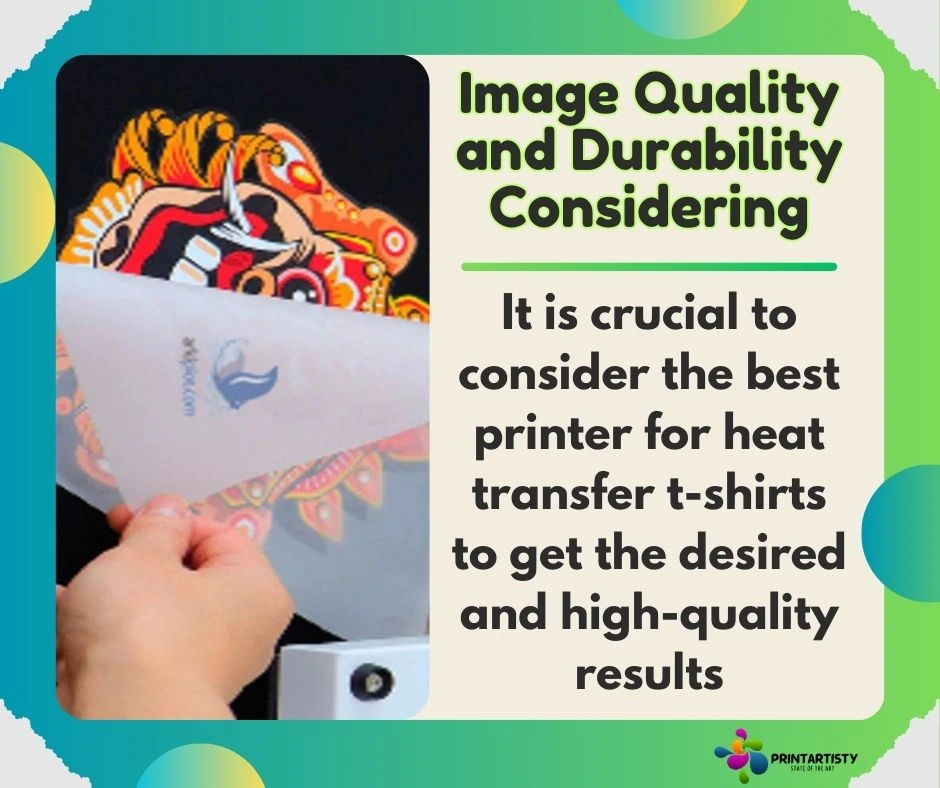
Image quality and durability are one of crucial factors that are must to be considered. Sublimation heat transfer paper is one of the most durable printing methods out there because it is less prone to fading or peeling. While the heat transfer paper printing method is versatile without any restrictions on color and garment type.
Check Can You Use Regular Ink On Heat Transfer Paper.
It is crucial to consider the best printer for heat transfer t-shirts to get the desired and high-quality results.
Frequently Asked Questions
Can heat transfer paper be used on surfaces other than fabric?
Yes, heat transfer paper can be used on a variety of other surfaces including, mugs, ceramics, wood metal, or plastic. But it is more recommended to check the instructions of the heat transfer paper (if any) to make sure compatibility with the other surfaces.
Can I reuse heat transfer paper?
No! Heat transfer paper is generally designed for one-time use. Once the heat transfer paper has been used, the coated film onto the paper is activated and get transferred along with the ink during heat pressing. So if use reuse it then the final results may be poor or faded with a single wash.
Conclusion
So we’ve described the 5 types of heat transfer paper that are widely used to customize apparel and another kind of substrates. Eventually, the best printing paper and method will depend on your printing needs and the fabric you tend to customize. Each printing paper has its own properties which make them distinct from each other. So go ahead, explore the various types of heat transfer paper, and unleash your creativity in designing unique and customized creations.


